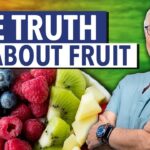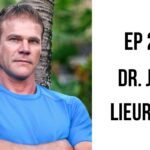*****
Summary of Transcript:
Peter Etia discusses fat flux and nicotine with Bob in this YouTube video. Peter explains that weight loss does not necessarily mean fat loss, as a person can be in ketosis and still gain weight. He then uses an engineering analogy to explain that fat cells can be reduced in size or number and that the flux of fatty acids into and out of the fat cells can be used to infer the behavior of the fat cell. Bob then adds that when discussing weight loss and fat loss, calories in and out are important and that fat can be trapped in adipose tissue. Peter also mentions his blog post on fat flux.
*****
Summary of Description:
In this Ask Me Anything episode, Peter and Bob discuss fat flux, the flow of fat entering and exiting a fat cell, which determines how much fat a person carries. They explore the significant influence of insulin on the net fat balance and common strategies, such as fasting and low-carb diets, that can be used to liberate and oxidize fat from fat cells. Additionally, Bob explains his research process and how he seeks answers to Peter’s challenging questions.
*****
Exploring Fat Flux with Peter Attia and Bob Kaplan
In this episode of “Ask Me Anything” (AMA), Peter Attia and Bob Kaplan take a deep dive into fat flux. Fat flux is the fat entering and exiting a fat cell, determining how much fat a person carries. Peter and Bob discuss the major players that impact the flow of fat and the significant influence that insulin has on the net fat balance. They also explore common strategies, such as fasting and low-carb diets, that have efficacy in liberating and oxidizing fat from fat cells.
The Two Main Ways to Reduce Fat Mass
The two main ways to reduce fat mass are to reduce the amount of fat entering a fat cell and to increase the amount of fat exiting a fat cell. According to Peter and Bob, insulin plays a key role in both processes. Insulin increases the grease entering a fat cell by stimulating the activity of enzymes that promote fat storage. Insulin also decreases the amount of fat exiting a fat cell by inhibiting the activity of enzymes that promote fat mobilization.
Exploring the Benefits of Fasting and Low-Carb Diets
Fasting and low-carb diets are two common strategies that can be used to reduce fat mass. Fasting has been shown to reduce insulin levels, which can then lead to an increase in fat mobilization. Low-carb diets also reduce insulin levels and can lead to an increase in fat mobilization. Low-carb diets can also reduce the amount of fat entering a fat cell by decreasing the number of carbohydrates available for fat storage.
Bob’s Research Process
Bob is an advocate for a curious mindset when it comes to scientific research. He believes that the best way to answer questions is to ask more questions and explore the answers. Bob explains his research process and how he seeks answers to Peter’s challenging questions. Bob also shares his tips and tricks for answering a scientific inquiry in a time crunch.
In the full episode, Peter and Bob discuss the importance of understanding fat flux and explore why most people with excess body fat will lose fat mass when reducing carbohydrates or eating a ketogenic diet. They also explain why being in nutritional ketosis does not automatically translate to negative fat flux (fat loss).
To view the full video and learn more, subscribe to the podcast and become a member of the subscriber benefits: https://peterattiamd.com/subscribe.
*****
Source Description
Peter and Bob deeply dive into fat flux in this “Ask Me Anything” (AMA) episode. They define the major players that impact the flow of fat entering and exiting a fat cell, determining how much fat a person carries. They discuss the significant influence of insulin on the net fat balance and explore common strategies, such as fasting and low-carb diets, that have efficacy in liberating and oxidizing fat from fat cells. Additionally, Bob explains his research process and how he seeks answers to Peter’s challenging questions.
In this sneak peek, we discuss the following:
00:00:00 – Intro
00:01:04 – The two main ways to reduce fat mass
00:08:35 – Explaining fat flux—how fat enters and exits a fat cell
This is a special sneak peek of AMA #22. You’ll want to become a podcast subscriber to view the full video. You can subscribe to the podcast and learn more about all the subscriber benefits: https://peterattiamd.com/subscribe.
In the full episode, we also discuss the following:
-What fat balance looks like
-What net fat influx looks like, and the impact of insulin in lipolysis
-What net fat efflux looks like, and the benefits of fasting for breaking the hyperinsulinemic cycle
-Exploring why most people with excess body fat will lose fat mass when reducing carbohydrates or eating a ketogenic diet
-Why being in nutritional ketosis does not automatically translate to negative fat flux (fat loss)
-Bob’s Approach to scientific research
-The importance of curiosity and a desire to learn
-Bob’s tips and tricks for answering a scientific question in a time-crunch; and
-More.
Show notes page: https://peterattiamd.com/ama22/
About:
The Peter Attia Drive is a weekly, ultra-deep-dive podcast focusing on maximizing health, longevity, critical thinking…and a few other things. With over 25 million episodes downloaded, it features topics including fasting, ketosis, Alzheimer’s disease, cancer, mental health, and much more.
Peter is a physician focusing on the applied science of longevity. His practice extensively deals with nutritional interventions, exercise physiology, sleep physiology, emotional and mental health, and pharmacology to increase lifespan (delay the onset of chronic disease) while improving healthspan (quality of life).
Learn more: https://peterattiamd.com.
Subscribe to receive exclusive subscriber-only content: https://peterattiamd.com/subscribe
Sign up to receive Peter’s email newsletter: https://peterattiamd.com/newsletter
Connect with Peter on:
Facebook: http://bit.ly/PeterAttiaMDFB
Twitter: http://bit.ly/PeterAttiaMDTW
Instagram: http://bit.ly/PeterAttiaMDIG
Subscribe to The Drive:
Apple Podcast: http://bit.ly/TheDriveApplePodcasts
Overcast: http://bit.ly/TheDriveOvercast
Spotify: http://bit.ly/TheDriveSpotify
Google Play: http://bit.ly/TheDriveGooglePlay
[vid_tags]

